You are a young noble, student at the Jesuit college and you wonder what to do next with your life? - Book oil, become a hussar! - says the captain. Driving is a dream career path. Provided that your ancestors left you at least a few villages, because you will have a lot of expenses.
The captain caught you in the tavern, began to put wine, honey and vodka. He said that the Republic of Poland needs people like you. He even showed a letter from the ruler ordering the formation of a new hussar unit. With each cup, the idea of joining the army seemed to get better and better: glory, adoration of noblewomen, the opportunity to win the king's favor ...
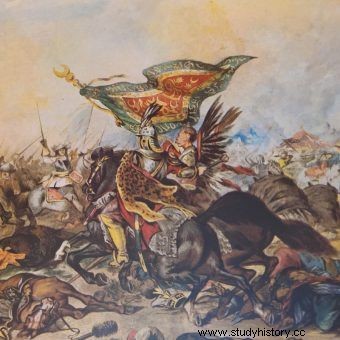
Joining the ranks of the hussars cost a fortune, we know how much exactly.
You timidly asked for your pay. The Captain reassured that he would certainly be, after all, the Seym is already deliberating over taxes for the needs of the army ... And then he quickly changed the subject.
How much can you earn on it?
At Sunday lunch, you decide to tell your family that you are quitting the Jesuit college and becoming a hussar. Mother crying. He can already see you through the eyes of his imagination with your guts ripped open on the field of some battle. Father is silent, but seems quite pleased. And then the uncle asked the most important question:- And how much will you earn now as a hussar?
Well. The wage, depending on the place and period, was the equivalent of about 0.2-0.4 kg of silver per quarter. It is not much, considering the fact that the horse could cost the equivalent of several kilograms of silver . Basically, the hussar earned about 30-50 zlotys per quarter. For comparison, one field of farm land (i.e. from 17 to 24 hectares) in the second half of the 16th century in Małopolska brought an average of PLN 55 per year.
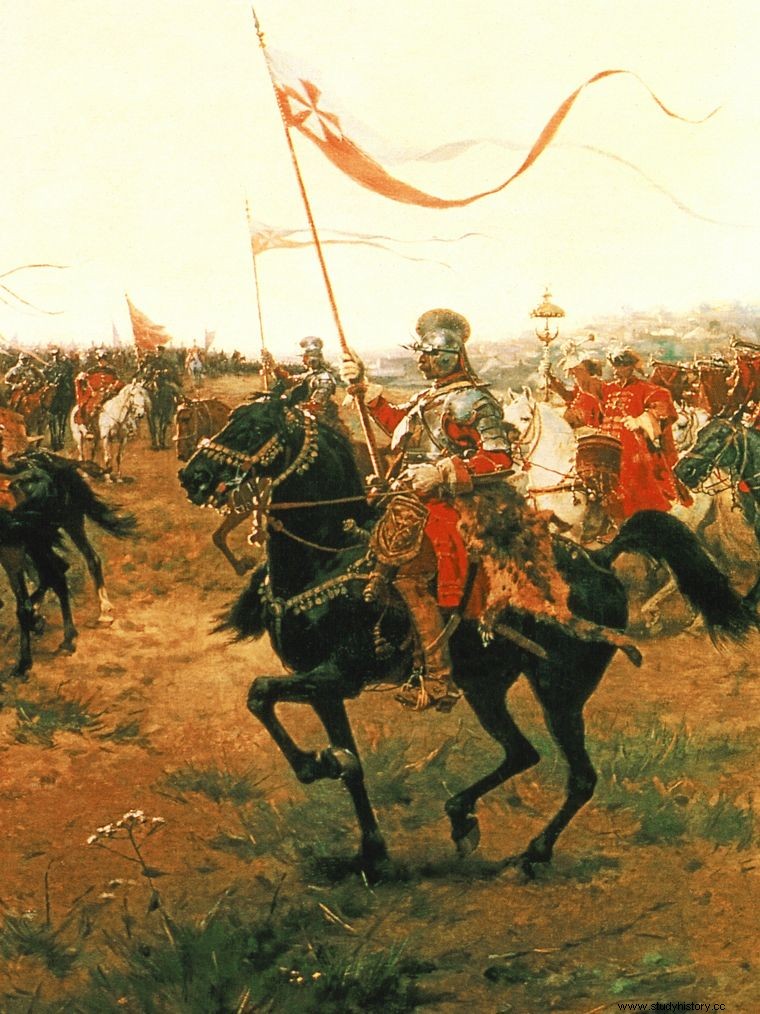
The Hussar's pay (depending on the period) ranged from PLN 30 to PLN 50 per quarter.
How did such income look in practice? The hussar going to Vienna in 1683, with two post offices, should receive a total of 1206 zlotys for three quarters of service. This amount included pay, hibernation and other allowances. However, the payment date set by the Seym is only ... on February 1, 1685.
If the captain was a wealthy man, then of course you could count on additional financial gratuities, paid from his private coffers. Some powerful magnates were able to add up to 25,000 zlotys a year to their banner!
- So garbage for wasted money - concludes uncle, however, and this is the end of the conversation. Meanwhile, your thoughts revolve around such celebrities as Jan Karol Chodkiewicz, Stanisław Koniecpolski, Stanisław Żółkiewski or Stefan Czarniecki. Especially the latter can be an example for you, because as we read in the book "Polish Gods of War. The greatest commanders in history ":
He did not come from a magnate family, did not study abroad, did not show up for his first war expedition with a well-equipped banner . He was born in 1599 as the son of an impoverished nobleman who had two fields of land and a mill in Czarnca near Włoszczowa.
Although Stefan's father earned some money later (he even received the lucrative Żywiec County), he could not compete with the most powerful Polish and Lithuanian families. In addition, he had ten sons, so the family cake would not be enough for everyone. For this reason, some of them had to become soldiers.
People
Where to start a hussar career? First you have to gather quite a lot of people. Every companion, as they call you from now on, should have at least two postal journeymen, whom he will equip himself. They will also be hussars, but will remain under your command. You will get the pay and divide it among your subordinates.
You will also need loose domestics, i.e. people responsible for horses, carts, food gathering or setting up tents. Although they are not soldiers, they should also be armed, for example with sabers and firearms.
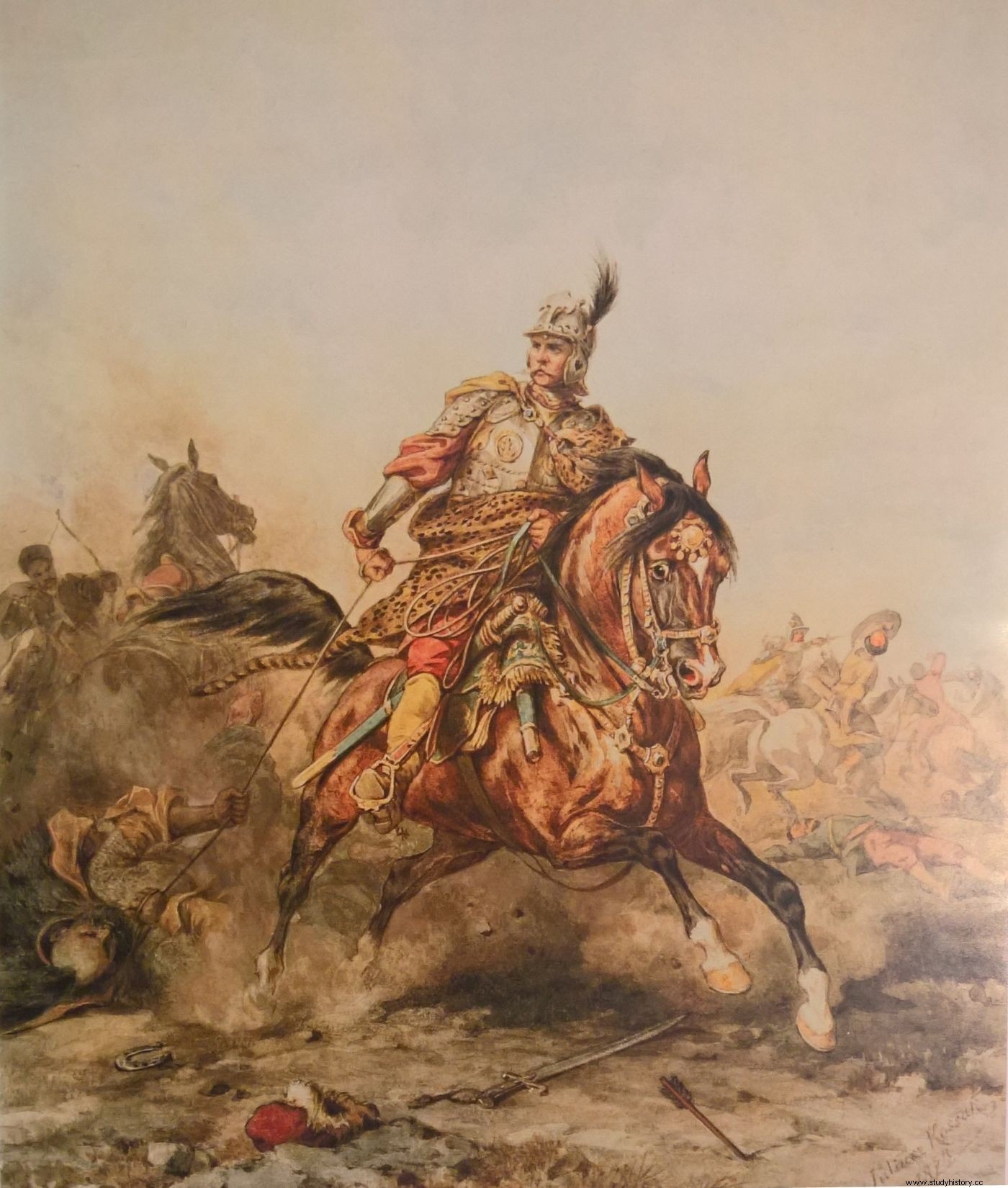
As a newly minted hussar companion, he will have to equip and pay for quite a large postage.
So your entire group will consist of a dozen or so people. Each of them will, of course, have to be paid for. But don't worry:even if you pay them little, they will earn some extra money from robbing the civilian population ... foreigners, or even their own!
Horses
Needless to say, you will also have to get horses. "Samogitia" bred in Lithuania are popular. They are small but very durable. And universal, because they can be used both for horse riding and for pulling sleds . In Przemyśl in 1614 it was possible to buy such jugs for as little as PLN 120.
However, this is not the horse you dream about. The real Ferrari among mounts are the "Turks". Brought from abroad, they reach astronomical prices. For example, Waćpan Marek Ładuchowski had a horse worth 2,500 zlotys in 1636. It was the equivalent of over 20 kilograms of silver!
Moreover, if you think that you only need one horse, you are seriously mistaken. You still need animals for your mailbox. The aforementioned vatan Ładuchowski had two more "turks" worth 2,000 and 1,200 zlotys, respectively.
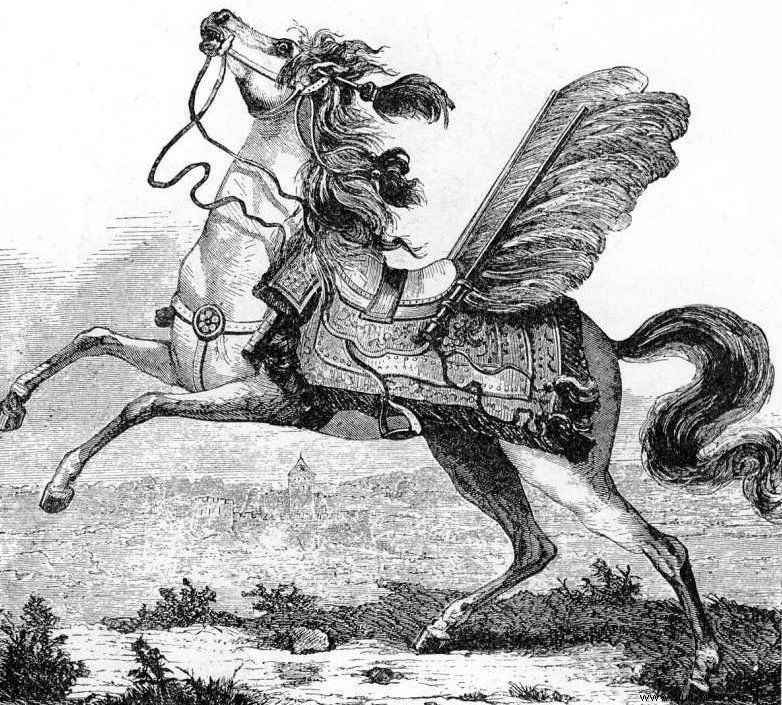
When you go to war, you will have to take a dozen or so mounts with you. The illustration shows a hussar horse from the "Old Polish Encyclopedia".
Also remember that horses die quickly in war. During the charge, they get hit most often. They also sometimes die during strenuous marches or when they eat bad fodder. So you need to have several mounts to be able to change over should one fall. Or to have something to eat in the most extreme situations when hunger strikes your eyes.
Of course, you also need horses to harness the wagons. Four should be enough to haul one. You will pay about PLN 450 for the entire set. As you can see, you will take a dozen or so steeds to war, worth a fortune.
Of course, for horses, craftsmen will propose a row (accessories), which consists of a saddle, stirrups, saddle pad or reins. And since you cannot be poor in front of other companions, it is best that all these elements should be richly decorated, for example with pearls or precious stones . The prices of the saddle itself start from PLN 200-300. The entire "row planted with stones, tin-painted, with a sub-ring and a furuncle planted with stones", which was owned by Mr. Laduchowski, cost 600 zlotys.
Weapons and armor
It's good that you will get at least a copy from the captain - it's his duty. The cost of one piece in 1618 in Vilnius was as much as 9 zlotys. Perhaps your commander would be more willing to pay this expense if it weren't for a one-off. Meanwhile, copies, as a rule, broke on impact. And let's remember that, for example, near Kluszyn, the Hussar banners had to charge ten times. It could hurt any purse.
However, you have to take care of the rest of the weapons yourself. The basis is a saber. According to Radosław Sikora in the book “Husaria. The pride of Polish arms ”, in 1616:
Prince Ostrogski had "a saber bound in gold, planted with turquoise, bought for six thousand thalers. This was then equivalent to 145.8 kg of silver or 12.25 kg of gold. So it was worth over ten times more than if it were made of pure gold! It was no exception. The Voivode of Derpia, Andrzej Leszczyński, sold his "saber of pure gold, planted with diamonds" for PLN 24 thousand. gold (194.4 kg of silver).
You can dream about such treasures - at the beginning you will have to settle for a more modest, but reliable hussar saber. Your loose domestics will receive regular batorówki.
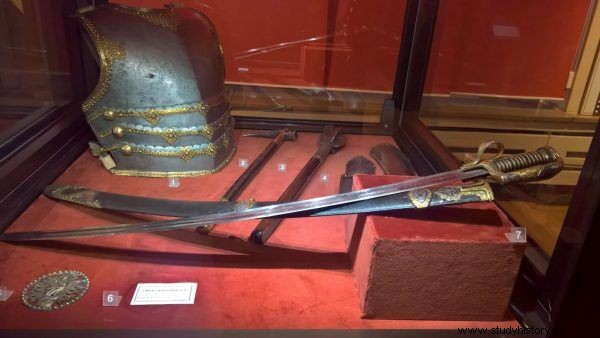
A good saber cost a fortune. The photo shows the armor and the armament of the hussar from the collection of the National Museum in Krakow.
But this is not the end. You also need a koncerz or broadsword and at least one pistol (or even better two). Bandolets are also popular, and some hussars still wore bows. Your post offices should have a similar set. A set of four bandolets and four pistols of the aforementioned Właduchowski were valued at a total of 180 zlotys .
It is also worth equipping yourself with protective clothing. That's why your inventory should include a helmet, chain mail or plate armor. The basic set for a companion is about 100 zlotys. You can buy appropriate clothing for your subordinates for around PLN 30. In addition, there are regular clothes:shirts, pants, zupan, and on it a delia or a robe. Here, when it comes to prices… sky is the limit .
Of course, if you want to impress others, you must have leopard skins over it all - four of them could be purchased for around 200 zlotys. Wear a wolf coat to save your postage.
Wagons, tents, food
Also, do not forget that logistics is the key to military operations. So you can't do without carts. Some comrades have several of them. You only need one to three to start with.
In addition to weapons, tools and equipment, you will be carrying food on the carts. On the endless frontiers of the Republic of Poland, often devastated by war, it is difficult to find provisions. Therefore, you need to buy smoked sausage shafts, groats, ground peas, salted flour (which will not go bad so quickly), dried fish and fruit. For food, however, you will get an addition to your pay, the so-called "kitchen". This is the amount of ... PLN 1 per quarter.
You will pay the most for the tents. Their prices ranged from PLN 300-500. They were most willingly imported from Turkey, and sometimes even Persia. In 1653, a tent could be purchased in Lviv for about 1000-1200 zlotys. It was quite a moderate amount - King Władysław IV brought a material palace for PLN 2,482 for himself.
So how much do I pay?
The prices make you a little dizzy. So let's summarize how much you need to spend. In 1670, a register of items belonging to one of the poorer comrades - Mr. Borkowski was made. The total value of his property was estimated at PLN 971.
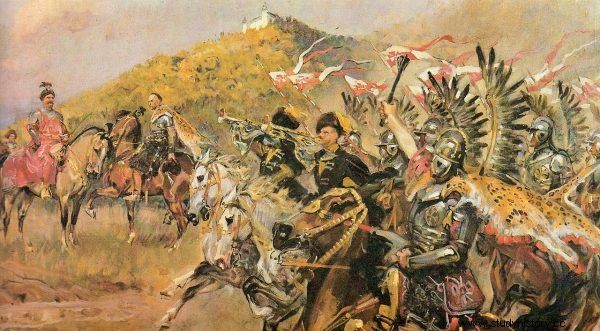
Displaying even a modest Hussar post could cost the equivalent of several kilograms of silver.
Another poor hussar, Jan Władysław Poczobut Odlaniecki, paid in 1659 for a three-horse hussar unit "without overpaying and buying from his brother" 1600 zlotys. In 1682, a French visiting Poland decided that the minimum cost of equipping a hussar was 2000 livres. Radosław Sikora in "Husaria near Vienna" calculated that it was the equivalent of PLN 4300-4400 of that time, i.e. 17.5 kilograms of silver.
From zero to queen
In the book "Polish Gods of War. The greatest commanders in history "we can read the following anecdote about King Stefan Batory:
Apparently, one time the famous adventurer Samuel Zborowski, mocking the monarch's strict lifestyle, said: - You can smell garlic here, Most Bright Lord. To which Batory replied:- I smell like a soldier and you smell like a scoundrel .
Remember that you will not fight for the wasted money, but for the good of the motherland and immortal glory. To put it in the words of the ruler:it is better to smell like a soldier than a scoundrel. The Republic of Poland will be a power as long as there are hussars like you.
